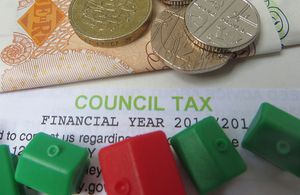NATIONAL INSURANCE RISE: WHAT DOES IT REALLY MEAN FOR YOU?

From April 2022, UK workers will have to pay an additional 1.25 percentage points in national insurance contributions (NICs), in a move branded by the government as a “health and social care levy”.
In real terms this means that employees, employers and the self-employed will pay 1.25 pence more on the pound for National Insurance (NI).
It’s important people understand what this rise means in real terms, so they can plan ahead and be ready for when NI goes up later this year. Luckily for you, the experts at money.co.uk have created this quick and easy guide with all the need-to-know information.
James Andrews, Senior Personal Finance Editor at money.co.uk, said: “With NI increasing by 1.25% points in April, it’s no surprise that many UK workers think this means their payments are going up by only a fraction. However, that figure relates to the rate, and this means that for most people contributions are actually increasing by more than 10%.
“In real terms, the rise will see someone who earns £20,000 a year paying an extra £130 in NICs annually, someone on £30,000 an extra £255, someone on £50,000 an additional £505, and so on. Each of these increases equates to an increase of around 10.4%.
“If you earn less than £9,564 a year then you don’t have to pay NI and the new levy does not apply to you.
“With the country in the midst of a cost of living crisis, the increased rate is set to affect millions of workers, particularly those on lower wages. For those people, the rise comes at a bad time, after research published last month showed that average personal debt in 2021 more than doubled in the space of just 12 months to a whopping £25,879 a person.
“Worse, this extra charge kicks in at exactly the same time as the expected 50% rise in the energy price cap that is set to add hundreds of pounds to the cost of heating our homes.
“Analysis of the figures, revealed in money.co.uk’s annual debt index, found almost a third (32.24%) of people attributed their debt to the cost of living, such as bills and food. While when it came to alternative causes of debt, almost two thirds of people (63.98%) blamed living expenses.
“This widespread debt largely resulted from skyrocketing inflation, which has climbed to its highest rate in 30 years at 5.4%. The dramatic increase reflects a rise in household costs, including food and non-alcoholic drinks, as well as higher prices for furniture, clothing and fuel.
“With a difficult few months ahead, it’s important for you to understand what the rises mean in real terms, so that you can plan ahead and be ready for when NI goes up in April. For more about personal finances in the UK, see money.co.uk’s debt index here: https://www.money.co.uk/current-accounts/debt-index.”




